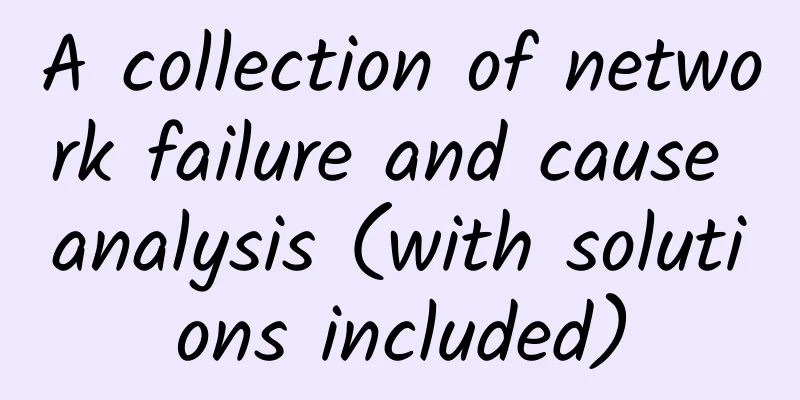Edge computing redefines enterprise infrastructure: new three-tier architecture is more flexible

|
【51CTO.com Quick Translation】With the industry's mass adoption of public cloud, many enterprises have clearly crossed the cloud chasm. Executives in the financial and public sectors who were once the most skeptical are now convinced of the value of the cloud. As cloud computing becomes mainstream, what is the next stop for enterprise infrastructure?
The next big trend in enterprise IT is edge computing, which reduces the amount of data transmitted back and forth between data centers and public clouds, shortening the latency caused by public cloud platforms. More importantly, edge computing will allow IT departments to keep sensitive data internally while still taking full advantage of the elastic network provided by public clouds. There is a misconception that edge computing is only designed for IoT. In fact, while edge computing is ideal for IoT solutions, it also provides tremendous value for departmental applications and traditional business applications. The edge computing layer will run closer to the data source. Each unit of edge computing has its own set of resources, manifested as computing resources, storage resources, and network resources. These units will be configured for certain specific functions of the device, such as network switching, routing, load balancing, security, and audit tracking, and are also responsible for running data processing pipelines. The data routinely collected by the enterprise will be analyzed by the complex event processing engine to decide whether to process it locally in the enterprise or send it to the public cloud for further processing. Generally, "hot data" will be analyzed, stored, and processed immediately by the edge computing layer, and this data is critical to the operation of the local infrastructure. "Cold data" that facilitates long-term analysis will be moved to the public cloud for batch processing. The applications built for edge computing in the future will be based on a three-tier architecture that is completely different from the three-tier architecture of the 1990s. In the process of moving from client/server to distributed computing architecture, Microsoft, Sun, IBM, and Oracle pursued this model: the user interface, business logic, and database run in separate layers, which is the traditional three-tier architecture familiar to many J2EE architects. However, the emerging three-tier architecture for future applications has no resemblance to the design patterns of the past. It is a completely new model, built around advanced technologies based on cloud computing, machine learning, and fast data. The emerging three-tier architecture will consist of the following logical layers: Data sources: Computing is increasingly data-driven. Everything from TVs to smartphones to industrial equipment, customer relationship management (CRM), supply chain management (SCM), and enterprise resource planning (ERP) is a data source. As computing and storage become affordable resources, it is easier to acquire and store data from a range of data sources. Integrating and correlating these data sets helps us uncover new insights. The data source layer includes any data source that can generate data, including machine logs, clickstreams, social media content, RDBMS, unstructured data, and structured data. In the new three-tier architecture, the data source becomes the top tier. Intelligence layer: Machine learning (ML) is becoming an integral part of the user experience. Microsoft, Google, Amazon, and IBM are working hard to embed ML into phones, apps, platforms, and the cloud. In the contemporary three-tier architecture, ML will span the edge computing layer and the cloud computing platform to provide intelligence. Data scientists will harness the power of the cloud to create machine learning models, which requires access to the raw computing power available from the public cloud. With innovations in GPUs, FPGAs, and custom chips, we can create trained machine learning models based on large data sets and complex algorithms. These models are tested in the public cloud and then moved to the edge to process real-time data sets. Whenever a new model needs to be created or an existing machine learning model needs to be optimized, the model will return to the public cloud. Therefore, the public cloud will handle the heavy lifting, while the edge computing layer will handle production-grade data sets. This intelligence layer spanning the edge layer and the public cloud is the second layer of the new architecture. Operational, actionable insights: This layer is responsible for taking action based on the information provided by the previous layer. In the future, business decision makers will be able to get accurate insights based on the analysis provided by the intelligence layer. This will speed up the decision-making process of business executives. This layer can be authorized to act on behalf of users. For example, when a certain condition is evaluated as true by the rule engine, the components in this layer can control the machine or equipment. In short, users will have access to rich dashboards with KPIs here. It is foreseeable that affordable computing and storage resources, coupled with the rise of machine learning, will jointly promote the adoption of edge computing in the near future. Even traditional enterprise applications will begin to take full advantage of this architecture, not just the Internet of Things. Original title: Edge Computing -- Redefining the Enterprise Infrastructure Author: Janakiram MSV [Translated by 51CTO. Please indicate the original translator and source as 51CTO.com when reprinting on partner sites] To learn more about hot news, please follow 51CTO's "Technology News Morning Report" column! 【Editor's recommendation】
|
<<: Why is optical fiber cheaper than noodles?
>>: It’s settled! 5G official logo officially announced
Recommend
VULTR adds 32nd data center in the world: Tel Aviv, Israel
In February this year, we shared the news that VU...
EBS Lens, a powerful tool for block storage monitoring and service stress testing and tuning, is released
EBS Monitoring Status Block storage is a block de...
Before 5G mobile phones become popular, these problems must be solved first
Although information about 5G has attracted a lot...
How high is the spectrum efficiency of 5G?
Wireless spectrum is the most valuable resource f...
6 trends that will boost the impact of IoT in 2018
In 2016-2017, the trend of IoT was widely accepte...
The Ministry of Industry and Information Technology interprets the three-year special action plan for increasing IPv6 traffic, requiring home terminals to support
[[410842]] The Ministry of Industry and Informati...
[11.11] Summary information: VPS-BID/Journey Cloud/Smart Trade Cloud/A400/Themebetter
The annual Double Eleven e-commerce promotion has...
Which industry will be the hot spot for artificial intelligence in the 5G era?
In this process, many applications are constantly...
How do operators launch new packages under homogeneous competition?
Since the commercial use of 4G, superior policies...
Actual combat: Can you believe it? Two VRRP hot standby gateways were installed in the operator's central computer room at the same time, but they fought with each other and caused the entire network to explode!
The case shared in this issue is related to VRRP ...
Fearing that 5G deployment will affect aviation safety! US aviation agencies and telecommunications agencies are in dispute
Although 5G (fifth-generation mobile communicatio...
Is it impossible for non-middlemen to hijack TCP?
TCP initial sequence number Hi, my name is Robert...
Sogou launches new AI voice recorder to lead the “new voice” in the voice recorder industry
On February 26, Sogou held an online launch event...
The Future of 5G and IoT in Smart Cities
[[438866]] In short, a "smart city" lev...
Cisco unveils future networks that can self-learn, self-adjust and self-evolve
Cisco's next-generation network can continuou...









